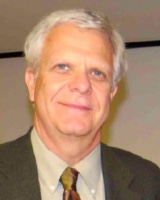Dear Judy,
I have known you for many years personally but became your treating physician when you were diagnosed on a MRI scan to have a vestibular schwannoma (VS). I can only imagine what went through your mind when you found you had a benign brain tumour that was responsible for your left sided hearing loss.
You seemed somewhat surprised I didn’t more forcibly recommend an active treatment option at the time such as stereotactic radiation or microsurgical removal. I know that this is what I may have thought if I was in your position.
Instead I recommended that as your tumour was relatively small, we could continue to watch it with serial intracranial MRI scans. If there was no significant growth, we could continue with this management. If your tumour did grow however then some form of active intervention would be required. Since we met to professionally discuss your management it has now been almost 6 years and I am pleased to report that everything has been stable with regard to the tumour size.
As you know we have had quite considerable experience watching individuals with VS’s over the years with Conservative Management (or the Wait and Scan Approach). While we still don’t know why some tumours grow and others do not (in fact up to 15% might decrease in size naturally) we certainly know that your quality of life is best if no active intervention is required as we are still not able to improve upon your lost hearing or the balance function despite our best intentions. As they say, sometimes less is better in medicine.
When we met I advised you that our 10 year longitudinal prospective study in patients (average age of 58 years at entry) with tumours < 1.5 cm in size within the cerebellopontine (CP) angle had demonstrated the vast majority of tumours continued to grow slowly (92% < 2mm/year in cross sectional diameter), the average growth rates of tumours within the internal auditory canal was remarkably 0mm/year (the presence of a tumour localized to the IAC seemed to demonstrate indolent behavior for the most part in this age group) and that 95% of patients with IAC tumours did not require active intervention. The most important stats from this study were that over 10 years 60% of patients did not go on to receive active treatment and in the 40% that did there was no harm by waiting compared to our normal surgical and stereotactic radiation controls. Moreover, a tumour usually declared whether it was growing within a five-year timeframe.1
Just wanted to let you know we have continued to offer a trial of conservative management to most patients with vestibular schwannomas < 2cm in size within the CP angle taking into account age, presence of other health co-morbidities and whether hearing is serviceable (and associated with favorable prognostic findings for hearing preservation surgery). Our findings have paralleled further studies regarding the conservative management of VS’s from the UK, Denmark, Netherlands, US and even China specifically. 2,3,4
I don’t know whether I ever told you the story that in April 2005, I had presented our then seven- year longitudinal findings at the time to the North American Skull Base Society who were meeting in Toronto. The findings are captured in the editorial I wrote shortly afterwards for the journal, Clinical Otolaryngology, entitled “What Would You Do if You Had a Small Vestibular Schwannoma? An Apocryphal Tale.” 5 I had presented the case of an intracanalicular VS in someone who was 50 years old (my age at the time) where hearing preservation was not an issue.
I polled the audience to see what they would recommend as the treatment before my lecture began. Most were surgeons and it came to no surprise that almost all recommended microsurgical removal although there were a few who felt stereotactic treatment was reasonable. Only a couple of people in the audience raised their hands to show support (myself included) for an initial trial of conservative management at the time.
After presenting our seven-year results (70% continued to be managed conservatively; 30% had required some form of active treatment) I asked the same question showing the same imaging study but said “this time the patient is you”. Remarkably well over 90% of the audience now seemed comfortable following their tumour with serial imaging initially. Interesting how things can change?
In my further review for this letter I have also looked again at the world literature and find that the conservative management option continues to be recommended certainly in the Northern European countries and less grudgingly now in the US. Unintended benefits from conservative management also interestingly demonstrated what seemed to be a significant cost saving for publicly funded health care systems (i.e., Canada) where the money saved could be reinvested in other programs. From our calculations it would take up to an 80% failure rate before the upfront costs of conservative management would exceed those of microsurgical removal for example.6
While not everyone should be considered a candidate for a trial of conservative management, I think that when your tumour is relatively small and hearing preservation not of concern then this option should at least be considered. The sine qua non however is that you need to be followed with interval scans possibly for many years to come.
When I look back, I think the advice I gave you at the time was right advice for the moment. I hope that things will continue as they have and perhaps maybe your tumour will start to get a little smaller as the years go by.
Will have my office make the arrangements for your next MRI in August-September 2019. Wishing you the very best as always.
Sincerely, John
References
-
Hajioff D, Raut VV, Walsh RM et al. Conservative Management of Vestibular Schwannomas: Third Review of a 10 Year Prospective Study. Clinical Otolaryngology 2008; 33:255-59.
-
Patel J, Vasan R, van Loveren H, Downes K et al. The Changing Face of Acoustic Neuroma Management in the USA: Analysis of the 1998 and 2008 Patient Surveys from the Acoustic Neuroma Association. Brit J Neurosurgery 2014; 28:20-24.
-
Stangerup SE, Caye-Thomasen P. Epidemiology and Natural History of Vestibular Schwannomas. Otolaryngology Clinical N Am 2012; 45: 257-268.
-
Martin T, Tzifa C, Kowalski C, Holder RL et al. Conservative Versus Primary Surgical Treatment of Acoustic Neuromas: A Comparison of Rates of Facial Nerve and Hearing Preservation. Clinical Otolaryngology 2008; 33: 228-235.
-
Rutka J, What Would You Do if You Have a Small Vestibular Schwannoma? An Apocryphal Tale. Clinical Otolaryngology 2008; 33:236-238.
-
Verma S, Anthony R, Tsai V, Taplin M et al. Evaluation of Cost Effectiveness for Conservative and Active Management Strategies for Acoustic Neuroma. Clinical Otolaryngology 2009; 34; 438-446.

Dr. John Rutka is a fellow of Royal College of Physicians and Surgeons of Canada and a professor of Otolaryngology-Head and Neck Surgery at the University of Toronto. His active staff appointment is at the University Health Network where he has a subspecialty interest in otology/neurotology. He is on consultant staff at Sinai Health Systems, St Michael's Hospital, the Dryden District Regional Health Centre and the Meno Ya Win, Sioux Lookout District Hospital.
Dr. Rutka has been involved in the active management of patients with VS's over the past three decades in conjunction with his neurosurgical and radiation colleagues at the University Health Network. John has been recognized for his work and has been awarded the Sir William Osler Clinician Scientist Award previously.
Dr. Rutka is the chief mentor for the the Peter and Melanie Munk Foundation Fellowship in Otology/Neurotology and is the co-director of the UHN Center for Advanced Hearing and Balance Testing and the Hertz Multidisciplinary Neurotology Clinic. Dr. Rutka lives in Toronto with his wife Marilena.

